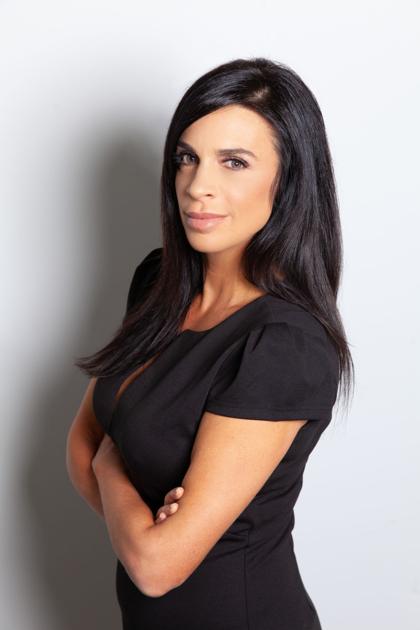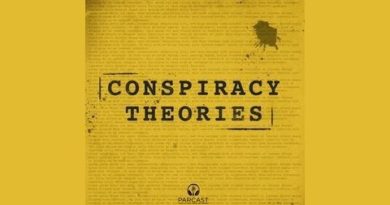Bradford native to appear in 9/11 documentary | News | oleantimesherald.com

It’s the kind of assignment that changes a reporter.
On Sept. 11, 2001, Bradford native Emily Longnecker had only been working in the field for about three years when she was called to travel to Shanksville — the site where Flight 93 crashed after passengers and staff tried to take back control of the plane from hijackers.
Twenty years later, Longnecker has been invited to the 9/11 Museum & Memorial to share her experience as part of the activities to commemorate the anniversary of the attacks.
Television reporters and anchors who covered the attacks are being interviewed for a longform documentary exploring what it was like being a reporter covering the tragedy. Additionally, she will appear in a series highlighting female journalists.
The documentary and series will be featured on The Great Courses Plus streaming service, as well as at the museum.
The museum is flying her to New York City on Friday for her interview.
Longnecker said she was still a “baby journalist on 9/11,” having only been a reporter for three years. At that time, she was a television reporter for Channel 10 WTAJ-TV, a CBS affiliate in Altoona.
It was hot that day, Longnecker recalled.
“It was the most beautiful blue sky day.” She said the day was “perfect,” the type of day “you wake up and think, ‘This is going to be a great day.’”
But now, “There are days when the sky is that blue again, and I think, this is a 9/11 day.”
She watched video footage from home of the first and second planes crashing into the World Trade Center buildings, then hurried into work. She and her coworkers were in the newsroom trying to decide where to go and what to do for news coverage, when the third plane crashed at the Pentagon, leading to an order that all planes in the air get to the ground.
“We heard on the police scanner talk about a plane that wasn’t responding and following orders to get down,” she said. “I remember we all kind of looked at each other and thought, nah.”
They believed the plane’s failure to respond was due to confusion from the chaos. They did not know at that time that it had been hijacked.
Longnecker was first sent into Altoona to talk to people about their reactions to the plane crashes; while she was doing that, the station learned about the crash in Shanksville, located about an hour from Altoona. They did not know at that point why it crashed.
WTAJ sent its closest crew to Shanksville. Once they realized the crash was part of the attacks, Longnecker was sent, too.
“I got there in time to file a report for the 11 o’clock news. I was there for about a week covering it,” she said.
She recalled the day when reporters were being taken to the scene, and while they were kept a safe distance away, it was still intense.
“They had the area cordoned off where the plane had basically disintegrated into the ground.” She explained the scene was hard to describe. “Now they were part of the earth.” Crews were on scene excavating the ground to pull out what was left.
Longnecker recalled reporting on then-Gov. Tom Ridge’s press coverage of the Shanksville crash — and the conspiracy theories that the crash inspired.
One question she heard was, “Did the U.S. government shoot down the plane,” she said. “The answer definitively at that press conference was absolutely not.”
Longnecker noted Ridge went on to become the first Secretary of Homeland Security.
At one point while she was at the crash site, buses with family members of the crash victims were brought to the scene.
Longnecker went to several press conferences with family members of the victims, too.
“It was my first lesson, my first grand scale tragedy, just having empathy for people and giving them space and letting them talk, being aware of how vulnerable they were and what responsibility was on my shoulders to get it right,” she explained.
“I felt a great responsibility. I felt heavy. I had only been doing this three years. Imagine still kind of learning on the job, covering this large-scale mass tragedy for your country.”
Longnecker talked about what it was like talking to people in the worst moments of their life. Some family members wanted to talk to have their loved ones be remembered.
“To watch another human express that level of grief is something. It’s heavy,” she said.
Her upbringing helped to prepare her.
“My parents are good people,” she said. “I think they taught me to be empathetic and kind and a good listener.”
Her parents — Robert and Phyllis Longnecker — still live in Bradford.
While she was in Shanksville, she would call her parents every night to talk — it was the type of situation that made you want to reach out to your loved ones — but otherwise she had to compartmentalize the million things going on in her head so she could get the job done.
“I had so many thoughts in my head over those weeks. First and foremost, the people on that plane, the people on all those planes.”
She thought about the attacks from her perspective as an American knowing the attacks happened in this country.
Longnecker also realized what the 9/11 attacks would mean for Muslims. In college, some of her dearest friends were Muslim women from Pakistan.
“On my mind a lot that day, as details were coming out about the people responsible,” she became “worried for my friends’ safety” and “how Muslims overall would be perceived.”
To critics who would tell Longnecker that she should be worried about Americans, she said, “I was worried about both. The truth is, when you leave your small town and you get to meet people from other countries, you can’t hate from up close.”
When she finally got a break from covering the events, she found herself “sleeping and sleeping and sleeping. I remember being very numb afterwards for a while.”
Many of the details have faded over the last 20 years — “I can’t remember if I even ate in those first few days,” Longnecker said — but she recalls moments such as standing next to CNN reporter Wolf Blitzer.
In addition to talking about her coverage of the events, the filmmakers will be asking Longnecker how different 9/11 would have been if social media was a factor.
She imagines there would have been a lot of “John Q Publics” reporting on the events.
“While I think there’s a place for that, it’s also very dangerous,” she said.
To illustrate, Longnecker referred to the role social media had in spreading misinformation related to the 2020 presidential election.
“Let’s look at all the nonsense video that was altered around the election. Look at these fake votes, not knowing what the hell they were. I am not here for that,” she said.
Quoting another journalist, Longnecker said, “Better to be last and right than first and wrong.”
While it’s great to be the first reporter to get the scoop, it’s more important to look for good information.
She talked about the difference between covering breaking news versus spreading misinformation without checking on the source.
“In a breaking news situation, the information does evolve,” she said.
Authorities can share better information to share as a situation continues. But people mistake that process for “fake news.”
“I know that the people I work with now, and the people I worked with then, have a lot of integrity and do the best job they can” — and ask the hard questions. “That’s our job: to ask hard questions and to ask uncomfortable ones.”
Longnecker has another 9/11 anniversary event coming up, too: She will reunite with her old colleagues at WTAJ to tape a reunion in Shanksville. She has not been back to Shanksville since she covered the crash.
“I expect that will be emotional and also wonderful to see my colleagues.”
Her experiences have also appeared in a book called “Women Journalists at Ground Zero.”
Longnecker said she is “a much better journalist” than she was 20 years ago. She now has seven Emmys and is up for another, too.
Longnecker is now a reporter for Channel 13 WTHR in Indianapolis.
But she is still proud of the reporting she did as a new reporter in Shanksville.
“I’m proud of the work I did at that time because it was hard work but it was necessary work. I’m honored and humbled by the work I was able to do at that time, as a native of Bradford, as a woman, as a journalist, as an American.”
*** This article has been archived for your research. The original version from Olean Times Herald can be found here ***


